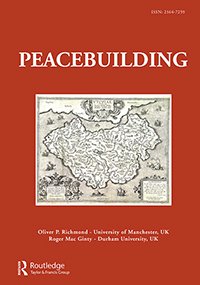By Rupert Horsley
This report details the key trends and developments in human smuggling in Libya in 2023. In large degree, the year was one of continuity with the patterns seen in 2022. Over the course of the year, for example, 77 470 migrants departed the Libyan coast, only marginally higher than 2022’s figure of 75 500.1 Furthermore, hybrid migration, in which migrants travel to Libya regularly or semi-regularly before attempting the sea crossing to Europe, accounted for an estimated 75% of these departures, also roughly similar to the proportion recorded in 2022. Many of the migrants involved in hybrid journeys first arrived in Libya at Benina airport in the east of the country. This indicates the increasing importance of eastern Libya to human smuggling writ large. In addition to the migrant arrivals at Benina airport, eastern Libya also saw a dramatic rise in departures from the coastal areas in and around Tobruk in 2023, with some 40% of sea crossings in the first half of the year taking place from there. Some, though not all, of the migrants leaving from the east coast had arrived in Benina. While heightened enforcement by the Libyan Arab Armed Forces (LAAF) suppressed departures from the Tobruk hub in the second half of 2023, the body reportedly continued to allow Benina to be used as the main air travel arrival point for hybrid migration for the rest of the year. Thus, the LAAF clearly emerged as one of the main actors influencing hybrid migration in Libya in 2023. Following the shutdown of the Tobruk system, hybrid migration sea crossings were displaced to the west coast. By August, departures from this area had increased significantly and there were reports of migrants accumulating in warehouses in several hubs. In October, a notably large series of departures from Zuwara occurred at a remarkable rate. Increased departures from the west coast indicate that entrenched smuggling networks remain ready to seize opportunities. Given the political and security fragmentation of the region, these networks are likely to underpin the resilience of human smuggling in Libya for the foreseeable future. A notable element that remained marginal in 2023 was trans-Saharan smuggling through Libya. This was once a major route for migrants departing from Libya, but has declined significantly since 2017/18 due to insecurity and migrant abuse in Libya and law enforcement action in downstream countries. One of the few significant developments was the relatively moderate but growing number of Sudanese refugees fleeing the civil war in that country. However, this was not substantial enough to drive systematic changes in the dynamics of overland human smuggling. Similarly, Sudanese nationals did not leave the Libyan coast in large numbers. This is the latest GI-TOC monitoring report on human smuggling in Libya. It builds on the series of annual reports that has been issued since 2017, tracking the evolution of human smuggling in Libya, as well as the political, security and economic dynamics that influence it.2
Geneva, SWIT: The Global Initiative Against Transnational Organized Crime, 2024. 36p.





















